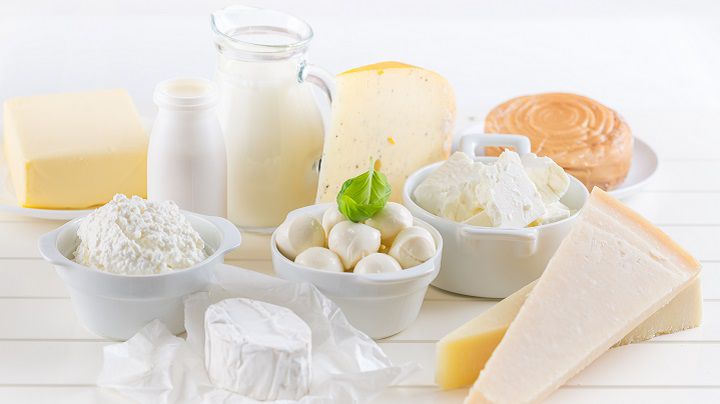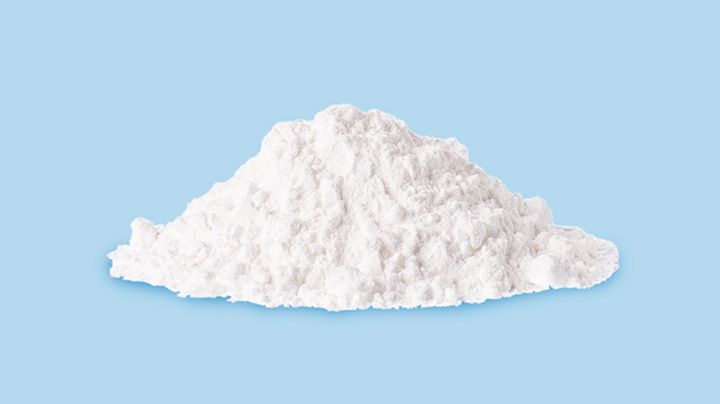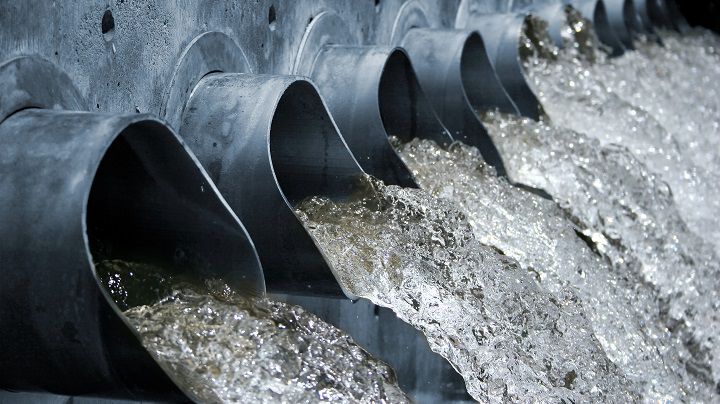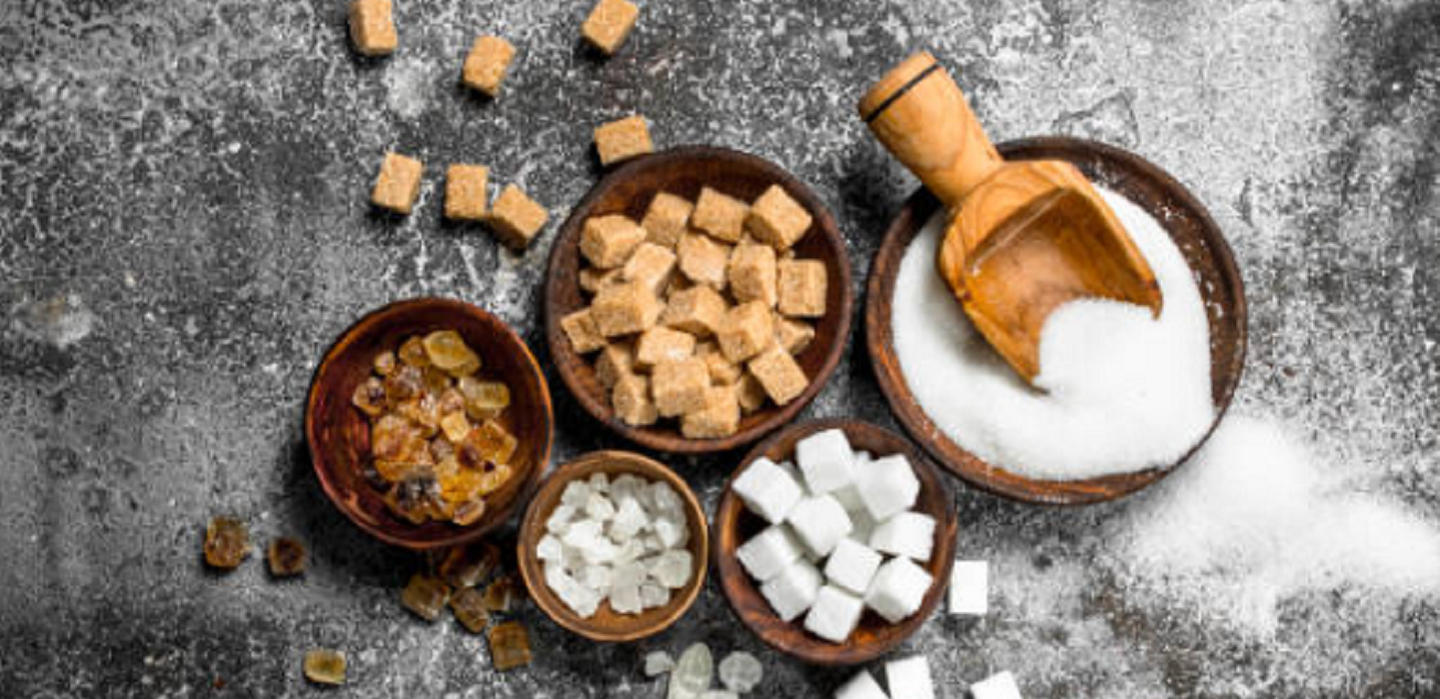Cost-effective separation and concentration of sugar and sweeteners
Sugars and sweeteners are an important part of the global food and beverage industry. With diverse sources and uses, the industry requires a wide range of process technologies for manufacturing.
As consumers become increasingly interested in healthier and more sustainable food choices, many refineries have begun to diversify their product offerings based on existing feedstocks. New sugars like allulose and tagatose can offer consumers lower calorie alternatives while maintaining sweetness. Oligosaccharides can be fractionated from starch or sugar cane and used as bulking agents in food formulations. Still other processes convert sugars into monomers for bio-based, renewable polymers.
Depending on the region, crop source, and regional preferences, several technologies may be required. DuPont provides a full range of crop to product solutions using a variety of technologies, including: ion exchange resins, polymeric adsorbents, chromatography resins, and reverse osmosis and nanofiltration spiral wound FilmTec™ elements. We work closely with scientists and engineers to unlock the full potential of your application and process.
Sugar and Sweeteners Applications
Cost-effective deashing of sugar syrups with DuPont™ AmberLite™ ion exchange resins
Sugar and sweeteners have impurities before refining. These impurities include ash, protein, and other contaminants that are introduced from the starch and process water, as well as other raw materials. Deashing, the removal of ash and inorganic substances, takes place in a process that uses cation and anion exchange resins to eliminate impurities in the syrup stream.
As a global leading ion exchange resin supplier, DuPont has a full line of cation and anion deashing products. DuPont™ AmberLite™ ion exchange resins are an industry standard for deashing dextrose and fructose. Our product portfolio can enable high syrup throughput, economical regeneration, long shelf life, and low operating costs.
View all products for deashing in our product finder.
Efficient chromatographic separations for improved purity and yield
Chromatographic separation has long been used in the production of high fructose corn syrup, dextrose purification, and beet sugar applications. Compared with other separation methods such as distillation, crystallization, and solvent extraction, the chromatographic separation enables fast separations that require less chemical use.
Chromatography is used when a targeted sugar or sweetener must be separated from other carbohydrates, organics, or high concentrations of salt. Sugar-sugar separations are the most common and typically occur after decolorization and deashing of the sugars. Chromatographic separations of sugar-salt by ion exclusion take place when a sugar has been contaminated with excessive levels of salt.
DuPont™ AmberLite™ chromatographic separation resins help the sugar and sweetener industry achieve higher recovery yields and lower dilution with better performance.
Sugar-Sugar Separations:
- Monosaccharide: Allulose, Arabinose, Tagatose, etc.
- Oligosaccharides: Trehalose, Fructo-oligosaccharide (FOS), Xylo-oligosaccharide (XOS), Isomalto-oligosaccharide (IMO), Inulin, Galacto-oligosaccharide (GOS), size-based separations, etc.
- Polysaccharides: Resistant Dextrin, Polydextrose, Soluble Dietary Fiber, etc.
- Sugar alcohols (Polyols, Sugar Polyols): Mannitol, Sorbitol, Xylitol, Maltitol, Erythritol, etc.
Sugar-Salt and Sugar-Impurity Separations:
- Crystallizer mother liquor purifications (Glucose, Sorbitol, etc.)
- Beet sugar purification (Sucrose/Betaine/Salts/Color Bodies)
Mixed bed ion exchange resins and polymeric adsorbents to enhance sweetener quality and stability
Designed for mixed bed polishing, DuPont™ AmberLite™ ion exchange resins are used at the end of the sweetener process to eliminate the remaining impurities. Using mixed bed resins, avoids the large pH swings when separate columns are used. This process minimizes impurities from degradation reactions and extends the syrup’s shelf life.
DuPont™ AmberLite™ ion exchange resins and AmberLite™ XAD™ Polymeric Adsorbents help deliver decolorization and prolong the shelf life of the product by eliminating undesired flavors, aromas, and color preservatives.
Increase production yield in crystalizing refinery sucrose from sugar cane
When raw sugar cane is first treated, it produces a syrup with a yellow or tan hue. These impurities causing the color must be removed prior to the crystallization of the white sugar.
Some of the color in the raw syrup can be removed through filtration and precipitation, but the rest of the color is made up of soluble organic contaminants that are hard to get rid of. DuPont™ AmberLite™ ion exchange resins are widely used for the final decolorization. Our resins are known for high throughput and long service life, which increases sugar and sweetener processing reliability and operational savings.
Optimizing sugar conversion rates through enzyme immobilization
Enzymes are increasingly being used as a synthesis technology in the production of pharmaceuticals, foods, fine chemicals, flavorings, and other products. By immobilizing the enzymes, it increases the enzyme stability performance and reduces processing costs as the enzymes can be reused multiple times and do not have to be filtered out of the final product. Enzyme immobilization, in the sugar and sweetener industry, has two well-known applications:
- Converting starch to glucose (also known as dextrose) with alpha- and beta-amylase.
- Converting glucose to fructose with glucose isomerase.
However, by combining chemical and enzymatic conversions with existing feedstocks, refineries are now achieving next-generation sweeteners and molecules.
Enzymes can be immobilized on phenolic based ion exchange resin media such as DuPont™ Duolite™ ion exchange resins packed into vessels for continuous, heterogeneous catalysis. The advantage of immobilized enzymes is they are reusable unlike homogenous single application enzyme addition. Immobilizing the enzyme provides increased enzyme stability, higher and more consistent activity, and lower overall costs for raw materials and operation.
View all enzyme immobilization products in our product finder.
Concentration and separation with less energy consumption and waste discharge
To overcome the high-energy consumption for concentrating the sugar processing streams, manufacturers can add reverse osmosis FilmTec™ elements as a primary concentration step prior to steam evaporators. By removing water earlier in the process, the load on evaporators can be reduced as well as the associated energy costs.
As sugar refiners look at diversifying their product mix, high-purity molecular carbohydrate separations are required. Nanofiltration FilmTec™ elements can be used to separate unrefined monosaccharides from disaccharides or oligosaccharides. Membrane based separations are a low capital option to assist in sugar recovery and crystallization for improved production yields.
View all products for membrane-based sugar concentration and separation in our product finder.
Sustainable solutions for wastewater treatment and salt recovery
Decolorization of cane sugar juice is primarily accomplished using anion exchange resins. These resins remove high molecular colorants like melanin, caramels, polyphenols from sugar liquors. The anion resins can then be regenerated for reuse with 10% sodium chloride.
The regenerant can have a high chemical oxygen demand and be loaded with colorant, and sodium chloride, creating a disposal challenge. Our nanofiltration membrane technologies can recover the regenerant salt while blocking the colorants (500 – 20,000 Dalton). Recovered sodium chloride can then be reused in the process for further regeneration of anion resin, significantly decreasing waste disposal and salt consumption for the plant.
Reducing effluents discharge: reduce the volume and pollution under minimum standards in environmental regulations and sustainability goals.
Recycling by-products: recover salts and more from wastewater streams to compensate operation cost.
View all products for waste brine recycling after decolorization in our product finder.
-
Deashing
Cost-effective deashing of sugar syrups with DuPont™ AmberLite™ ion exchange resins
Sugar and sweeteners have impurities before refining. These impurities include ash, protein, and other contaminants that are introduced from the starch and process water, as well as other raw materials. Deashing, the removal of ash and inorganic substances, takes place in a process that uses cation and anion exchange resins to eliminate impurities in the syrup stream.
As a global leading ion exchange resin supplier, DuPont has a full line of cation and anion deashing products. DuPont™ AmberLite™ ion exchange resins are an industry standard for deashing dextrose and fructose. Our product portfolio can enable high syrup throughput, economical regeneration, long shelf life, and low operating costs.
View all products for deashing in our product finder.
-
Chromatographic Separation
Efficient chromatographic separations for improved purity and yield
Chromatographic separation has long been used in the production of high fructose corn syrup, dextrose purification, and beet sugar applications. Compared with other separation methods such as distillation, crystallization, and solvent extraction, the chromatographic separation enables fast separations that require less chemical use.
Chromatography is used when a targeted sugar or sweetener must be separated from other carbohydrates, organics, or high concentrations of salt. Sugar-sugar separations are the most common and typically occur after decolorization and deashing of the sugars. Chromatographic separations of sugar-salt by ion exclusion take place when a sugar has been contaminated with excessive levels of salt.
DuPont™ AmberLite™ chromatographic separation resins help the sugar and sweetener industry achieve higher recovery yields and lower dilution with better performance.
Sugar-Sugar Separations:
- Monosaccharide: Allulose, Arabinose, Tagatose, etc.
- Oligosaccharides: Trehalose, Fructo-oligosaccharide (FOS), Xylo-oligosaccharide (XOS), Isomalto-oligosaccharide (IMO), Inulin, Galacto-oligosaccharide (GOS), size-based separations, etc.
- Polysaccharides: Resistant Dextrin, Polydextrose, Soluble Dietary Fiber, etc.
- Sugar alcohols (Polyols, Sugar Polyols): Mannitol, Sorbitol, Xylitol, Maltitol, Erythritol, etc.
Sugar-Salt and Sugar-Impurity Separations:
- Crystallizer mother liquor purifications (Glucose, Sorbitol, etc.)
- Beet sugar purification (Sucrose/Betaine/Salts/Color Bodies)
-
Polishing
Mixed bed ion exchange resins and polymeric adsorbents to enhance sweetener quality and stability
Designed for mixed bed polishing, DuPont™ AmberLite™ ion exchange resins are used at the end of the sweetener process to eliminate the remaining impurities. Using mixed bed resins, avoids the large pH swings when separate columns are used. This process minimizes impurities from degradation reactions and extends the syrup’s shelf life.
DuPont™ AmberLite™ ion exchange resins and AmberLite™ XAD™ Polymeric Adsorbents help deliver decolorization and prolong the shelf life of the product by eliminating undesired flavors, aromas, and color preservatives.
-
Decolorization
Increase production yield in crystalizing refinery sucrose from sugar cane
When raw sugar cane is first treated, it produces a syrup with a yellow or tan hue. These impurities causing the color must be removed prior to the crystallization of the white sugar.
Some of the color in the raw syrup can be removed through filtration and precipitation, but the rest of the color is made up of soluble organic contaminants that are hard to get rid of. DuPont™ AmberLite™ ion exchange resins are widely used for the final decolorization. Our resins are known for high throughput and long service life, which increases sugar and sweetener processing reliability and operational savings.
-
Enzyme Immobilization
Optimizing sugar conversion rates through enzyme immobilization
Enzymes are increasingly being used as a synthesis technology in the production of pharmaceuticals, foods, fine chemicals, flavorings, and other products. By immobilizing the enzymes, it increases the enzyme stability performance and reduces processing costs as the enzymes can be reused multiple times and do not have to be filtered out of the final product. Enzyme immobilization, in the sugar and sweetener industry, has two well-known applications:
- Converting starch to glucose (also known as dextrose) with alpha- and beta-amylase.
- Converting glucose to fructose with glucose isomerase.
However, by combining chemical and enzymatic conversions with existing feedstocks, refineries are now achieving next-generation sweeteners and molecules.
Enzymes can be immobilized on phenolic based ion exchange resin media such as DuPont™ Duolite™ ion exchange resins packed into vessels for continuous, heterogeneous catalysis. The advantage of immobilized enzymes is they are reusable unlike homogenous single application enzyme addition. Immobilizing the enzyme provides increased enzyme stability, higher and more consistent activity, and lower overall costs for raw materials and operation.
View all enzyme immobilization products in our product finder.
- Converting starch to glucose (also known as dextrose) with alpha- and beta-amylase.
-
Membrane-Based Concentration and Separation of Sugars
Concentration and separation with less energy consumption and waste discharge
To overcome the high-energy consumption for concentrating the sugar processing streams, manufacturers can add reverse osmosis FilmTec™ elements as a primary concentration step prior to steam evaporators. By removing water earlier in the process, the load on evaporators can be reduced as well as the associated energy costs.
As sugar refiners look at diversifying their product mix, high-purity molecular carbohydrate separations are required. Nanofiltration FilmTec™ elements can be used to separate unrefined monosaccharides from disaccharides or oligosaccharides. Membrane based separations are a low capital option to assist in sugar recovery and crystallization for improved production yields.
View all products for membrane-based sugar concentration and separation in our product finder.
-
Waste Brine Recycling After Decolorization
Sustainable solutions for wastewater treatment and salt recovery
Decolorization of cane sugar juice is primarily accomplished using anion exchange resins. These resins remove high molecular colorants like melanin, caramels, polyphenols from sugar liquors. The anion resins can then be regenerated for reuse with 10% sodium chloride.
The regenerant can have a high chemical oxygen demand and be loaded with colorant, and sodium chloride, creating a disposal challenge. Our nanofiltration membrane technologies can recover the regenerant salt while blocking the colorants (500 – 20,000 Dalton). Recovered sodium chloride can then be reused in the process for further regeneration of anion resin, significantly decreasing waste disposal and salt consumption for the plant.
Reducing effluents discharge: reduce the volume and pollution under minimum standards in environmental regulations and sustainability goals.
Recycling by-products: recover salts and more from wastewater streams to compensate operation cost.
View all products for waste brine recycling after decolorization in our product finder.
Find products for sugar and sweeteners applications
View a list of products suitable for sugar and sweetener processing.
Explore other food & beverage applications

We provide FilmTec™ Hypershell™ elements and ion exchange resins to help you process milk into the essential foods and ingredients we use every day.

Our full selection of high-quality strong acid cation and weak base anion ion exchange resins help tackle the challenging processing conditions that come with synthesizing organic and amino acids.

DuPont is a leading provider of purification technologies for liquid beverages. Our resin and membrane technologies help beverage producers improve safety, lower shipping costs, and enhance product health benefits.
Related industries
In addition to providing crop-to-table separations and purification solutions for the sugar and sweetener industry, DuPont offers reliable solutions for your wastewater needs.

We develop best-in-class technologies, accompanied by an advanced product portfolio of solutions, to address your crucial wastewater challenges.
Related resources
See what’s possible
Ask how we can help solve your separation and purification challenges across the sugar and sweeteners industry.
